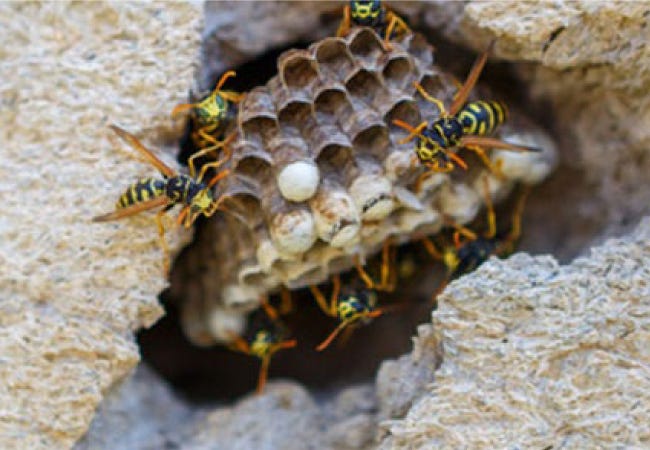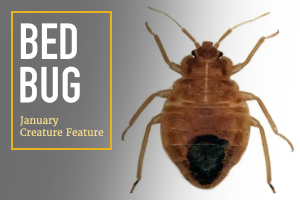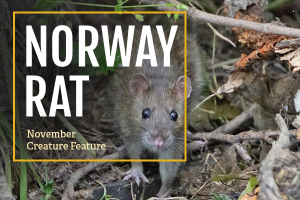


There are just over 20 species of paper wasp in North America. Like yellowjackets and hornets, they chew wood and mix it with saliva to create the paper with which they build their nests. Their nests consist of an open comb layer supported by a stem and often resemble an umbrella. A mature colony may contain up to 200 to 300 wasps, but colonies are usually smaller.
Paper wasps are semi-social. All the female “workers” have the potential to become reproductive in the absence of the queen, so they are not a true sterile worker caste. When a queen is present, they build the nest and forage for prey to feed the larvae while she lays eggs. As a colony begins to decline in the fall, males are produced along with additional females which leave the nest to mate. Paper wasp colonies are annual colonies. The queen, workers, and males die at the end of the year and only fertilized females overwinter in protected sites. They emerge in the spring and begin building new nests.
Since caterpillars are a staple prey of paper wasps, they are beneficial as they help control plant pests. However, because they will defend their nest and sting, they must be managed around structures. Nests are commonly built under overhangs or in hollows and can be treated from a distance with an aerosol product that has a jet spray. More wasps will be present during early morning and evening hours when they are less active, although coating the nest with treatment during the day can be effective. Removing nests after treatment provides added value to the customer.
FEATURED PRODUCTS
PROTRAINING COURSES
Bees & Wasps
Although bee and wasp stings can cause severe to deadly reactions in some people, they also serve important roles in the natural environment. Bees pollinate a variety of flowering plants, including many grown in agriculture. Wasps are predators of insects and spiders, some of which are pests, and help manage these prey populations. After completing this course, the learner should be able to identify solitary vs. social bees and solitary vs. social wasps, know when bees and wasps should be managed, and manage bees and wasps effectively, with or without pesticide application, if possible.
Sign in to your Veseris account now, or become a Veseris member to start learning online.





